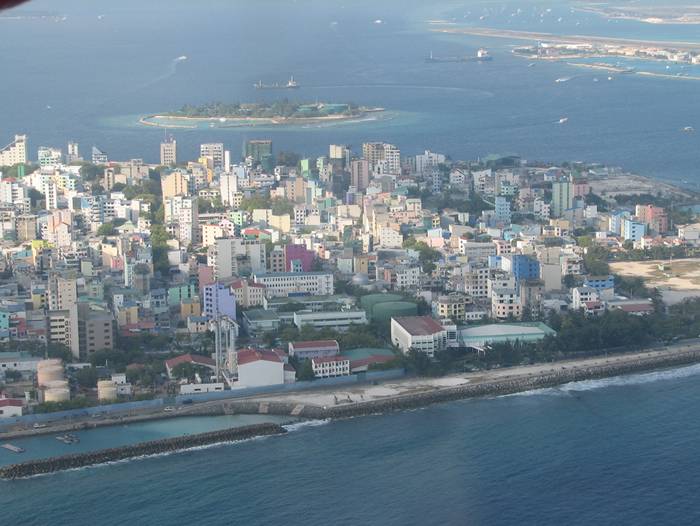বুধবার অফিসিয়াল কোন অ্যাসাইনমেন্ট নেই। তাই কর্মকর্তাদের সঙ্গে গল্প করে নিউজ তুলে আনতে গেলাম কারওয়ান বাজারের একটি অফিসে। হঠাত করেই ফোন পেয়ে মোটরসাইকেল নিয়ে মাত্র ২৫ মিটিটে চলে গেলাম সাভার। তখনো রানা প্লাজার অবস্থান সম্পর্কে আমার স্পষ্ট ধারনা নেই। সাভার উপজেলা পরিষদের সামনে যাওয়ার পর লাঠি হাতে এক শিশু, দুই যুবক আর এক বৃদ্ধ এসে আমার গতি রোধ করে বললো যাওয়া যাবে না। আমি সাংবাদিক পরিচয় দেওয়ার পার ষাটউর্ধ্ব বৃদ্ধ লোকটি ঠোঁট থেকে বাঁশি ছেড়ে দিয়ে আমার পিঠে হাত বুলিয়ে বললেন বাবা আপানে একটু এনাম মেডিকেলের সামনে দিয়া ঘুইরা যান। সে পথ বলে দিলো। কিন্তু এনাম মেডিকেলের সামনের রাস্তায় মোটরসাইকেল নিয়ে প্রবেশ করার পর ভয়াবহতার কিছুটা আচ্ করতে পারলাম। ঢাকা-আরিচা মহাসড়কের পাশে রানা প্লাজার সামনে যখন পৌঁছালাম তখন শুধু শত শত নারী পুরুষের কান্না আর হাজার হাজার মানুষের ভীড় ঢেলে চোখে পরলে অ্যাম্বুলেন্সের আসা যাওয়ার দৃশ্য। রাস্তায় হাজার হাজার মানুষের মধ্যে যেন সুপারসনিক গতিতে ছুলে চলেছে অ্যাম্বুলেন্সগুলো। এলজিআরডি প্রতিমন্ত্রী জাহাঙ্গীর কবির নানক একটি চ্যানেলের সরাসরি সম্প্রচারে রক্তের জন্য আবেদন জানাচ্ছেন। হঠাত একটি অ্যাম্বুলেন্স মন্ত্রী পাশে সরে গেলেন। এরপর নিজেই উতসুক জনতাকে সরি দিয়ে রাস্তা পরিস্কার করে দিলেন। বেলা একটায় আমার এক সহকর্মীর নির্দেশে আমি চলে গেলাম এনাম মেডিকেল কলেজে। সেখানে অ্যাম্বুলেন্স আর ট্রলির আসা যাওয়ায় ভিতরে প্রবেশ করাই কষ্ট কর। তবুও এক ফাঁকে ঢুকে পড়লাম। কোথায় কথা বলবো? কে জানাবেন তথ্য? শত শত রোগী, শত শত ডাক্তার। মনে প্রশু জাগলো, এত ডাক্তার এলো কোথেকে। খুঁজে খুঁজে জনসংযোগ কর্মকর্তার কটি আবিস্কার করলাম নিচতলায়। তবে সেখানে প্রবেশ করবে কি করে? সামনে অর্ধশত রোগী। কারোর মাথা থেকে রক্ত ঝড়ছে, কারোর ঠোট, মুখ বিকৃত, কারোর হাত, পা নড়ছে না। প্রায় আধা ঘন্টা এমন দৃশ্য দেখে প্রবেশ করলাম কক্ষে। পরিচয় দিতেই জনসংযোগ কর্মকর্তা পরিচয় করিয়ে দিলেন তার সামনে দাঁড়িয়ে থাকা একজন মানুষের সঙ্গে। তিনিই জানালেন হাসপাতালের ওই দিনের চিত্র। রাস্তায় এপ্রোন গায়ে যারা ট্রলি টানছে তারাও ডাক্তার, মেডিকেলের শিক, ছাত্র। এনাম মেডিকেলের ডাক্তার, ছাত্র, শিক, নার্স কর্মকর্তা কর্মচারী সবার প্রতি নির্দেশনা ছিলো রানা প্লাজার রোগীদের দ্রুত চিকিতসা সেবা দেওয়ার। ৩৫ বেডের আইসিইউ, ২৫ বেড়ের সিসিইউ খালি করা হলো মহৃহহৃর্তে। বন্ধ করে দেওয়া হলো পূর্ব নির্ধারিত সকল অপারেশন। সেদিন সেখানে কে ডাক্তার, কে ছাত্র, কে শিক, কে নার্স, কে কর্মকর্তা তার চেয়ে বড় পরিচয় ছিলো ওরা সবাই মানুষ। তারা অক্লান্ত ভাবে ছুটছে মানুষের জন্য, মানুষের জীবন বাঁচাতে। ততক্ষনে হাসপাতালের পিছনের ওয়ার হাউজে জমেছে ৩৫টি লাশ, স্টম ওয়াশরুমে আছে আরো ১৪টি লাশ। জনসংযোগ কর্মকর্তা জাহিদুল রহমানের পরিচয় করিয়ে দেওয়া নির্দেশদাতা ওই ব্যক্তিরই ছিলেন হাসপাতালটির মালিক ডা.এনামুর রহমান। একজন ছুটে এসে বললো কে যেন একজন ওষধ পাঠাতে চায়। কিন্তু এনামুর রহমান জানালেন আগে তার স্টোরের সকল ওষধ শেষ করতে।
বিকেল যত গড়াতে থাকে দীর্ঘ হতে থাকে লাশের সাড়ি। আহত আর নিহতের ট্রলি গড়াচ্ছে একই দরজার চৌকাঠে। তাই ব্যহত হচ্ছে আহতের সেবা। পরে সিদ্ধান্ত হলে লাশ যাবে পার্শ্ববতী অধরচন্দ্র উচ্চ বিদ্যালয় মাঠে। এনাম থেকে বেড় হয়ে আশপাশে খোঁজ নিয়ে দেখা গেলো সাভারের ত্রিশটি হাসপাতাল ও কিনিকেই চলছে জরুরী চিকিতসা সেবা। স্বজনদের ভিড় যখন বাড়তে শুরু করলো তখন হাসপাতালগুলো দেওয়ালে সাটিয়ে দিলো ভর্তিকৃত আহদের নামের তালিকা। কিন্তু নিহতদের তালিকা করবে কে। অধরচন্দ্রের বিশাল মাঠে হাজার হাজার স্বজনের আর্তনাদ। মাঠের মাঝে পুলিশের পক্ষ থেকে একটি বুথ ঘোলা হয়েছে। স্কুলের ক্যান্টিনে বসেছেন জেলা প্রশাসকের লোকজন। অধরচন্দ্রের দীর্ঘ বারান্দ ভরে গেলো সারি সারি লাশে। একনজর লাশের মুখ দেখে স্বজনরা চিহ্নিত করছেন লাশ। পরে পুলিশের খাতায় নাম লিখে টোকেন নিয়ে জেলা প্রশাসকের কাছ থেকে লাশ বহনের জন্য ২০ হাজার টাকা নিয়ে যাচ্ছেন স্বজনরা।
রাত সাড়ে নয়টা পর্যন্ত তিনটি নিউজ লিখে দুঘটনাস্থল ঘুরে রাত দেড়টায় সভার থানায় গেলাম দুটি গ্রেফতারের উড়ূ খবরের নিশ্চয়তা নিতে। তবে সেখানে গিয়ে ভবন মালিক রানার বাবা গ্রেফতারের উড়ূ খবরটির সঙ্গে জুটল পুলিশের আরো একটি উদাসীন খবর। এক কর্মকর্তা বাদি করলেন রানার বাবা মৃত। সাভার এলাকায় কর্মরত সমকালের নিজস্ব প্রতিবেদক নিশ্চিত সঙ্গে সঙ্গে তা চ্যালেঞ্জ করে ভুল প্রমান করলেন। এরপর আমরা তিনজন আর ছুটে এলাম বিদ্যালয় মাঠে। এবার সারাদিনের অদম্যতা আর কঠোর মন গলে গেল একটি কান্নার শব্দে। শিশু যশোধার কান্নার শব্দে ছুটে গেলাম কাছে। তার ভাই জয়ন্ত মারা গেছে। স্বজনরা তখন লাশ গ্রহনের জন্য জেলা প্রশাসকের সামনের অপেমান। কিন্তু অন্য এক আত্মিয়ের কোলে যশোধার গগণবিদারী ভাই ভাই চিতকার আমাকে নাড়া দিলো। অজান্তেই নোনা জলের বাঁধ ভেঙ্গে গেল। লাশের সাড়ি দেখতে যাওয়া আতাউর ভাইকে ফোন করে গালি দিয়ে ডেকে এনে দ্রুত পালালাম অধরচন্দ্রের মাঠ থেকে।দ্বিতীয় শ্রেনীর ছাত্রী যশোধাকে ভাই হারানোর সান্তনা আমার জানা ছিলো না। মা করো জয়ন্ত। তোমার যশোধার ভাই হতে পারিনি। তোমার ভালোবাসায় ভাগ বসাতে পারিনি।






























































